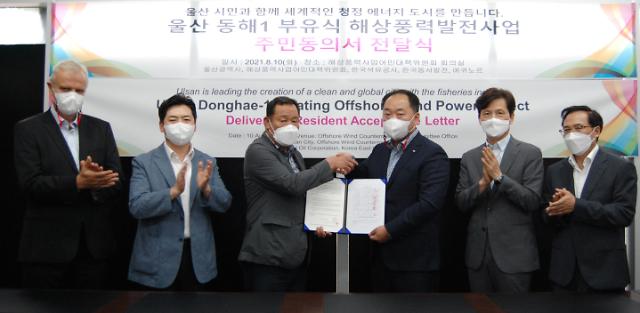Wind energy – South Korea
Fishermen have endorsed a renewable energy project being pushed by Equinor and South Korea partners to build a 200-megawatt floating offshore wind farm that would use a useless gas platform as a substation to generate electricity.

Consent from residents in fishing towns is seen as a prerequisite for state permission.
Equinor has formed a consortium with two state companies – Korea National Oil Corporation (KNOC) and Korea East-West Power – for the Donghae 1 floating offshore wind project close to KNOC’s gas field, some 58 kilometers (36 miles) east of the south-eastern industrial port city of Ulsan. The consortium would reuse the substructure of the gas platform’s jacket.
An association of fishermen delivered a consent form supporting the Donghae 1 project in a ceremony on August 10, Equinor’s branch in South Korea said in a statement, adding the consortium would gain momentum to win final state permission, which is a major step in promoting the installation of a floating offshore wind farm. The project passed a preliminary feasibility study conducted by a national think tank in May.
Equinor, which is operating Hywind Scotland, the world’s first commercial floating offshore wind farm commissioned in 2017 off the coast of Scotland, has been involved in the construction of two major floating wind farms off Ulsan. On August 5, fishermen endorsed the company’s independent ‘Firefly’ project aimed at installing an 800-megawatt wind farm by 2026 and agreed to form a consultative body on how to compensate and cooperate in winning state permission.
As part of its green energy campaign to expand the use of renewable energy, South Korea is actively pushing for offshore wind farms. Compared to fixed offshore wind farms which are generally installed in shallow waters, floating wind turbines located in deep waters can reduce visual pollution, provide better accommodation for fishing and shipping lanes, and reach stronger and more consistent winds.


